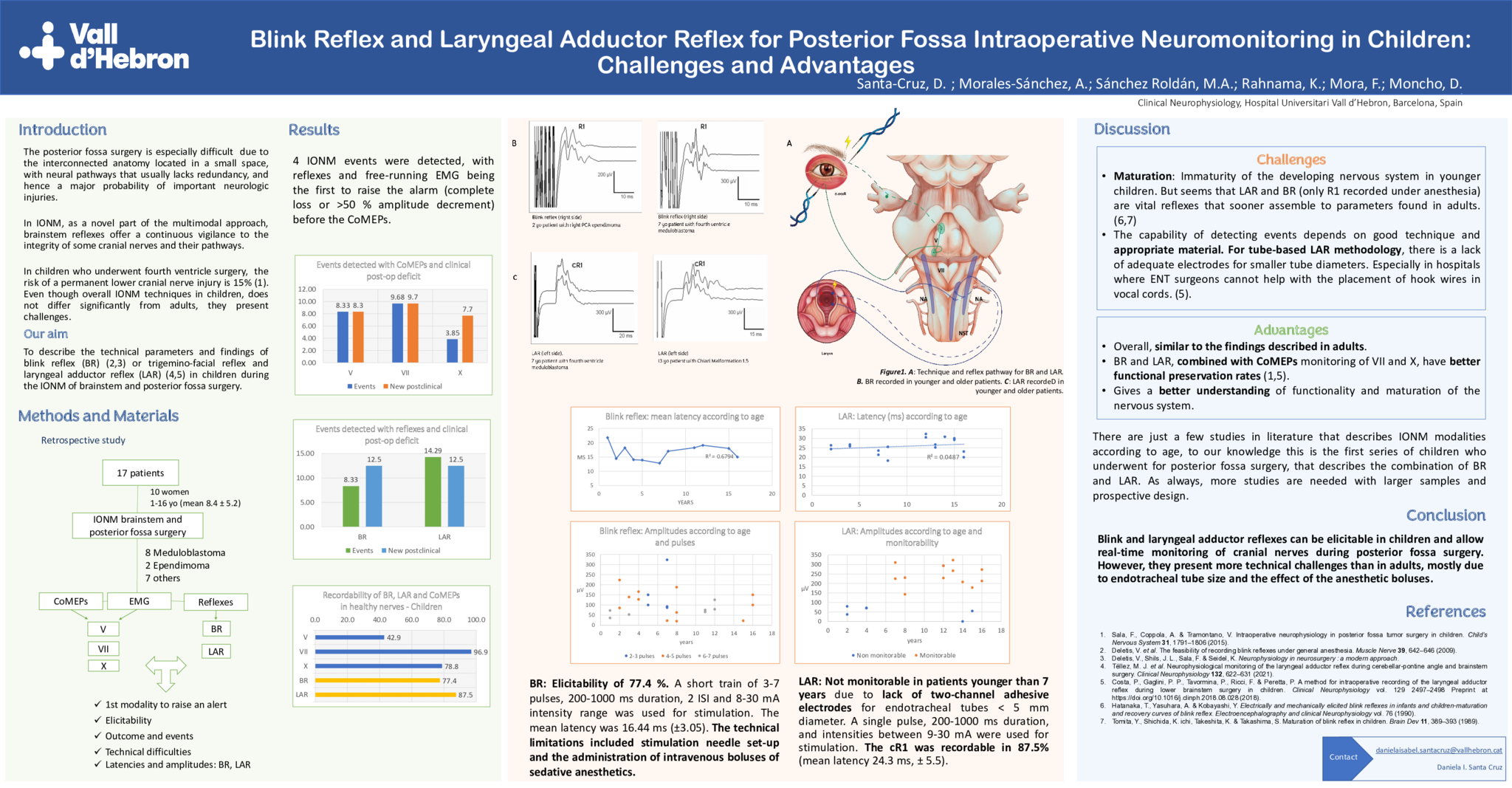OBJECTIVE To describe the technical parameters and findings of blink reflex (BR) and laryngeal adductor reflex (LAR) in children during the intraoperative neuromonitoring (IONM) of brainstem and posterior fossa surgery. METHODS Retrospective review of 17 patients (1-16 years old) who underwent posterior fossa surgery with multimodal IONM, including BR and/or LAR (tube-based methodology with adhesive electrodes), CoMEPs, and free-running EMG. We analyzed the elicitability of each modality, number of intraoperative events and the first modality to raise an alarm. Stimulus parameters, latencies and amplitudes of the reflexes, and their common limitations were also reviewed. RESULTS BR had an elicitability of 77.4 %. A short train of 3-7 pulses, 200-1000 ms pulse duration, 2 ISI and 8-30 mA intensity range was used for stimulation. The mean latency was 16.44 ms (SD 3.05). The technical limitations included stimulation needle set-up and the administration of intravenous boluses of sedative anesthetics. LAR was not monitorable in patients younger than 7 years due to lack of two-channel adhesive electrodes for endotracheal tubes < 5mm diameter. A single pulse, 200-1000 ms pulse duration, and intensities between 9-30 mA were used for stimulation. The cR1 was recordable in 87.5% (mean latency 24.3 ms, SD 5.5). Four IONM events were detected, with reflexes and free-running EMG being the first to raise the alarm before the CoMEPs. CONCLUSION Blink and laryngeal adductor reflexes can be elicitable in children and allow real-time monitoring of cranial nerves during posterior fossa surgery. However, they present more technical challenges than in adults, mostly due to endotracheal tube size and the effect of the anesthetic boluses.
- 1 view




